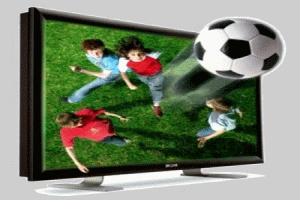Information Technology
3D TV Safety Testing
Posted by cosmic • Filed under InformationTechnology, Internet
3D TVs Need Safety Testing, CHOICE Says:
* 3D TV may cause depth perception issues
* Consumer advocates call for safety testing
* But expert says no different than usual TVs
Consumer advocates called for 3D TVs to be tested for safety before going on sale in Australia
after claims they could be hazardous.
It was reported that regular exposure to 3D broadcasts may lead to problems with depth perception in viewers. However there is disagreement over the risk, with one expert saying 3D TV will be a little different to watching regular television. Consumer group CHOICE said the technology should be tested just in case, as manufacturers begin to release the TVs in Australia. "Before these TVs were made available they needed to be proven safe for regular viewing for long periods of time," said spokesperson Elise Davidson.
Binocular Dysphoria

Author and virtual reality expert Mark Pesce claimed 3D TV could lead to damage linked to a condition called "binocular dysphoria".
The condition is caused when viewing 3D screenings that require your brain to trust certain depth perception cues and ignore others - creating the effect of immersion. "This condition is the price you pay for cheating your brain into believing the illusion of 3D," Pesce wrote on ABC website The Drum. He said the condition was usually harmless but could become hazardous after regular exposure, such as watching 3D TV every day.
Pesce said he became aware of the dangers of binocular dysphoria while working on virtual reality headsets for gaming systems in the 1990s. "Our tester's realised children could potentially suffer permanent damage from regular and extensive exposure," he wrote. "That's what the testers told Sega, and that's why the Sega VR system - which had been announced with great fanfare - never made it to market."
No different to regular TV
However University of Sydney associate professor Colin Clifford said the experience of watching 3D TV was closer to regular television than virtual reality headsets. "I think that the change from 2D to 3D TV is unlikely to be that significant,". Professor Clifford, an expert in visual perception, said the problem with virtual reality systems had to do with the screen being close to the eye. In the natural world, the degree by which your eyeballs move to see an object and the amount your lenses curve to focus on it are in sync. But with virtual reality systems - where the screen may be up close, but the object you're focusing on is at a distance - the two can be disconnected. "With virtual reality set-ups you've got the screen right by your eye, but you actually perceive something in the distance," he said. "You don't have that problem with a 3D TV or a 2D TV." Watching too much TV is probably not a good thing full stop, but as long as you do it in moderation I really can't see why 3D would be worse."
We've done testing, says Sony
Sony, which is planning to launch several 3D TV models in Australia, said it had already conducted safety tests on its technology. "We've had a third party, specialised research institute study the impact of 3D viewing to people's health and received a report that they did not find any change of health condition which should be deemed as an issue".
However details of the safety report, including whether it addressed binocular dysphoria, were not available.
cosmic
Affiliates
- Australian Cyber Security Centre
Reporting Of Cyber Security Threats - JUSTHOST.COM
Top Class Web Hosting
IT Trivia
IBM's PS/2 Microcomputer
IBM's rollout of its PS/2 microcomputer came on two levels. The ads raved about the classy technical specs: a blazingly fast internal architecture, plug-and-play BIOS, keyboard and mouse interfaces that are still in use today (and are still called the PS/2 interface) and a floppy disk format (1.44M) that was so good it lasted as long as the technology."
Steve Jobs Rejoins Apple
All that needs to be said here is: iPod. Had Jobs not come back to Apple, the iPod most likely would never have been brought to life. Had the iPod not been brought to life, Apple would have withered away. Without Apple, OS X would never have seen the light of day. And without OS X, the operating system landscape would be limited to Windows and Linux."

